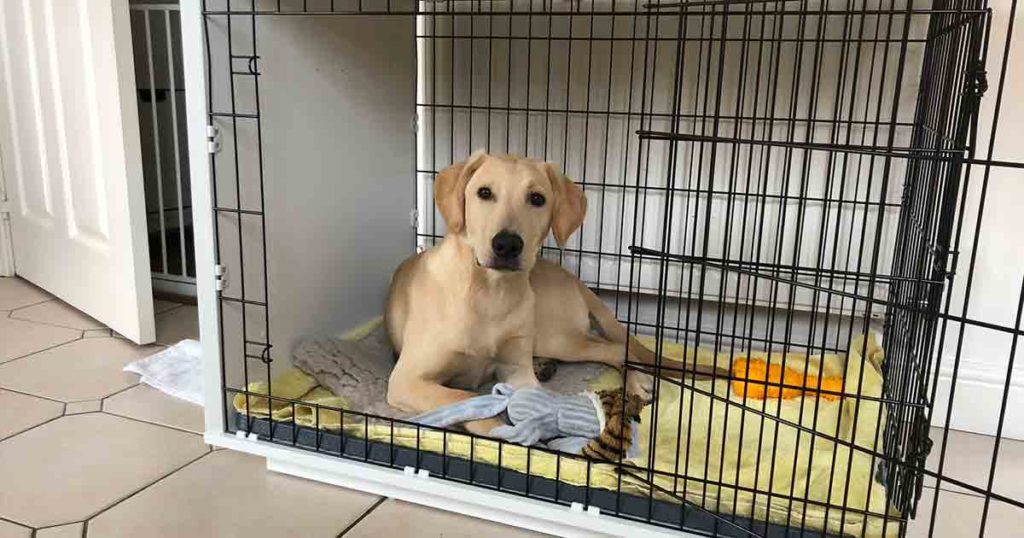When it comes to crate training, how you approach the process can make the difference between success and disaster. In this second of a two-part series, I’ll discuss the do’s and dont’s of crate training.
While crate training is an excellent behavior management tool for dogs, there are a few things to remember if you want to ensure a happy outcome.
Do: Find the appropriate sized crate for your dog.
Your dog’s crate should be big enough for them to stand comfortably at any angle and lie down. Though you might be tempted to get an overly large crate, big crates may give your dog the impression that its big enough to relieve themselves inside.
Don’t: Use the crate to punish your dog.
It is extremely important that the crate is viewed as a positive place for your dog – if you use it as a punishment, they won’t go into it voluntarily, and it will make them anxious and stressed.
Do: Crate train as early as possible.
Puppies are the most responsive to crate training – get a crate before you bring your pup home. Older dogs may associate crates with kenneling, punishment or unpleasantness, and as a result might respond poorly to the crate. If you have a rescue dog who has experienced trauma, consult a professional trainer or dog handler to discover the best training methods for your dog’s disposition.
Don’t: Leave small items or choking hazards locked in the crate.
This includes towels and blankets, as well as small toys.
Do: Crate your dog in stages.
Proper crate training should be conducted incrementally in the following steps.
- Make the crate a happy environment. Leave treats and toys in the open crate and allow your dog to voluntarily enter.
- Close the crate door after they have stayed inside on their own. Don’t just shut the door as soon as they walk in – wait for them to lie down and relax. Remain in the room the first few times you close the door.
- Leave the room for a few moments with the door closed. Once they’re accustomed to the door being closed, you can start to leave the room for brief periods.
- Leave your dog in the crate overnight. Once your dog has been successfully left in the crate for a full night, they will likely be comfortable being in the crate when you leave the house.
Your ability to move from stage to stage will determine the success of the training. If you are never able to proceed – if your dog never voluntarily goes into the crate or exhibits destructive behavior when the crate door is closed – they may not have the correct temperament for crate training.
Don’t: Be deterred by mild crying and whining.
If and when your dog begins crying during the overnight stage of crate training, simply allow them to discover that their cries aren’t yielding the desired results. Periodic high-pitched cries are not an indication of real distress – they’re just asking for their way. However, if the cries are urgent and desperate, your dog could be feeling heightened anxiety, and it could be unsafe to leave them crated.
Do: Develop a consistent routine.
Dogs are comforted by routines. Make sure your schedule is the same every day – the same mealtime, walk time, time to relieve themselves, and crate time. This will help your dog accept what is expected of them.
Overall wellness is essential to success in crate training – some medical conditions may make crate training an impractical technique, including heart disease and DCM. Zignature, Blue Buffalo and IAMS are affordable and reliably high-quality pet foods with formulas for dogs with health concerns. In the long-term, consistent crate training can help your dog feel comfortable and relaxed in your home.
I’m a doggie blogger, pet parent to two deviously smart rescue pups, and enthusiastic amateur photographer.
To read more on topics like this, check out the lifestyle category.
